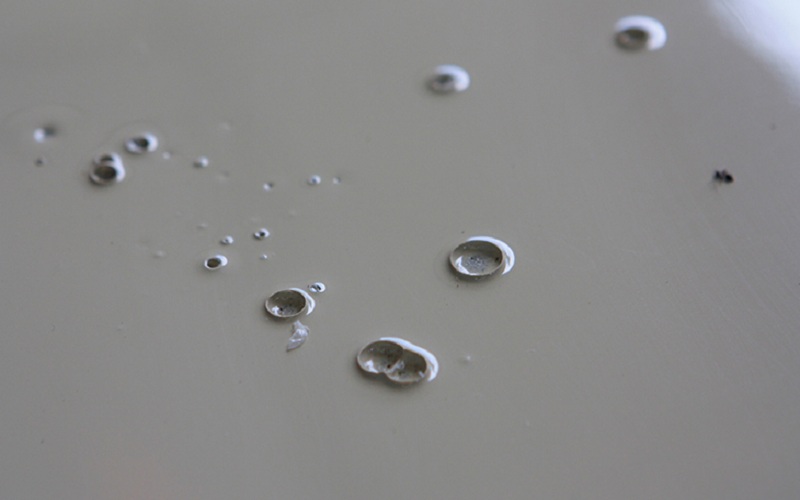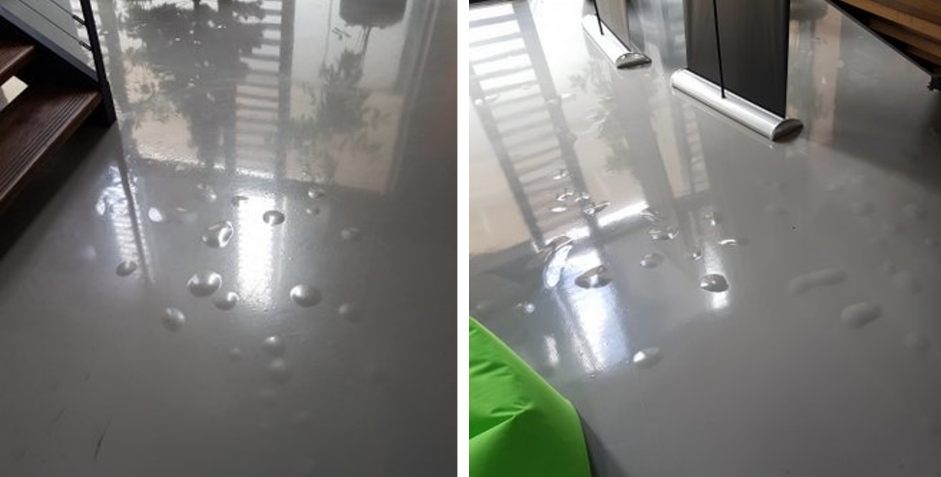Epoxy flooring is a popular choice for both residential and commercial properties due to its durability, versatility, and low maintenance requirements. However, during the installation process, it is not uncommon for bubbles to form in the epoxy. These bubbles can range in size from small to large and can affect the overall appearance and quality of the finished floor. In this article, we will explore the causes of bubbles in epoxy flooring and discuss ways to prevent and fix them.
One of the main causes of bubbles in epoxy flooring is improper mixing of the epoxy resin and hardener. If these two components are not properly mixed, it can result in pockets of air that become trapped in the epoxy as it cures. This can be caused by not mixing the epoxy thoroughly enough or by mixing it too quickly, which can introduce air into the mixture.
Another cause of bubbles in epoxy flooring is the use of a contaminated surface. If the surface is coated with epoxy is not properly cleaned and prepared, it can contain contaminants such as dirt, oil, or grease. These contaminants can interfere with the adhesion of the epoxy and cause bubbles to form as the epoxy cures.
Bubbles can also be caused by applying the epoxy too thickly. If the epoxy is applied too thickly, it can take longer to cure, which can result in the air becoming trapped in the epoxy as it cures. Additionally, applying the epoxy too thickly can also cause the epoxy to cure unevenly, which can lead to the formation of bubbles.
To prevent bubbles from forming in epoxy flooring, it is important to follow the manufacturer’s instructions for mixing and applying the epoxy. This includes mixing the resin and hardener thoroughly, using the correct ratio of resin to hardener, and applying the epoxy at the recommended thickness. Additionally, it is important to properly prepare the surface by cleaning it thoroughly and ensuring that it is free of contaminants.
If bubbles do form in your epoxy floor, there are a few steps you can take to fix them. One option is to use a heat gun or hair dryer to carefully heat the bubbles until they pop. This can help to release the trapped air and smooth out the surface of the epoxy. Another option is to use a needle or pin to puncture the bubble and allow the air to escape. However, it is important to be careful when using these methods, as overheating the epoxy or puncturing it too deeply can cause it to become damaged.
Bubbles In Epoxy Floor

Preventing Bubble Formation In Epoxy Floor – GZ Industrial Supplies
Why Are There Bubbles In My Epoxy Coating? – ArmorPoxy Floor Coatings
Why Does My Epoxy Floor Have Bubbles? Floor Coatings
Why Does My Epoxy Floor Have Bubbles? Floor Coatings
Floor Coating Bubbles and Blistersu2014Whatu0027s the Cause?
Floor Coating Bubbles After Install Solid Garage Floor Coatings
Bubbles In Epoxy Flooring: Why This Happens (u0026 How To Fix It
Installing Epoxy Flooring
Why Do Bubbles Form In The Epoxy Screed?
Key consideration for installation of an epoxy flooring system
Bubbles in Epoxy Floors – Seven (7) Reasons Why are you getting them u0026 How to avoid them
Bubbles on New Epoxy Floor The Garage Journal
Why does an epoxy floor coating bubble?
Related Posts:
- Epoxy Basement Floor DIY
- High Gloss Epoxy Floor
- Decorative Epoxy Flooring
- Epoxy Floor Garage DIY
- DIY Epoxy Kitchen Floor
- Best Epoxy Floor Paint For Garage
- DIY Epoxy Garage Floor
- Metallic Epoxy Floor
- DIY Garage Epoxy Floor
- Indoor Epoxy Flooring












